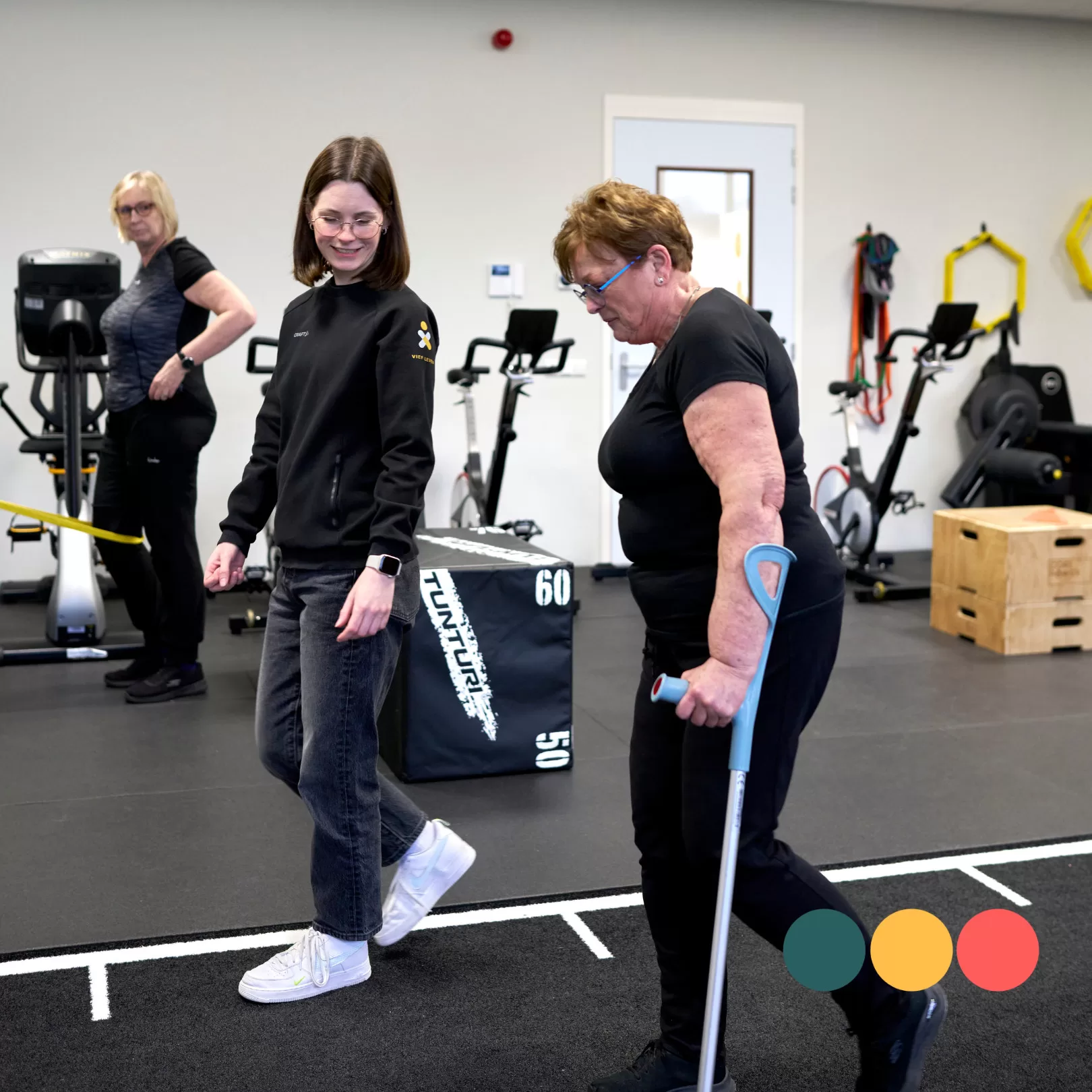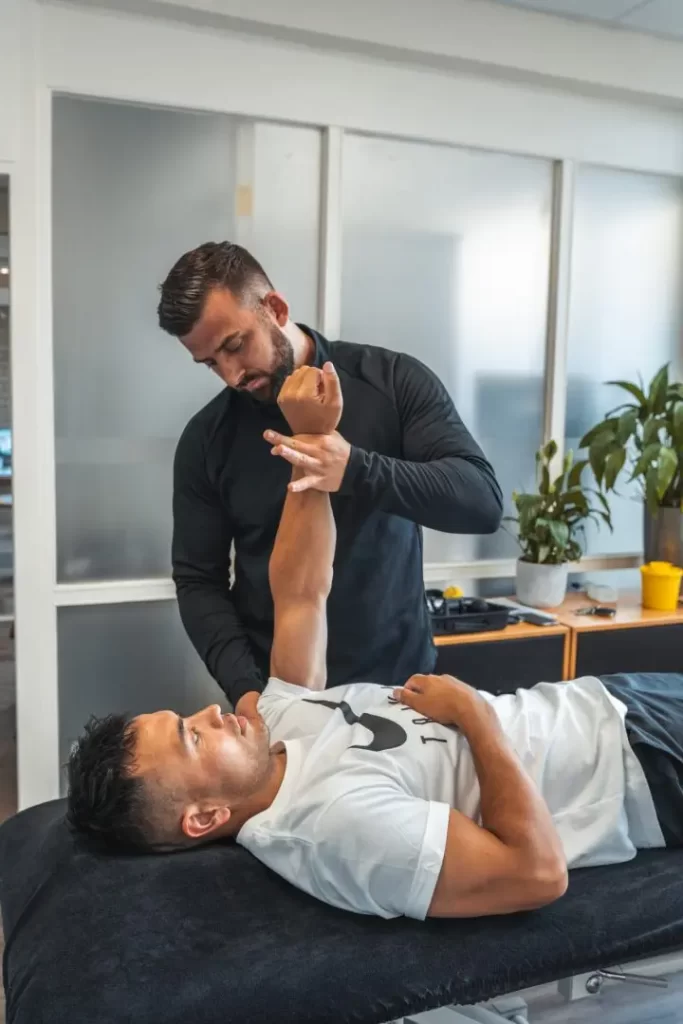When various treatments no longer produce the desired results, a total knee replacement may offer a solution. In this operation, the joint is usually completely replaced with a prosthesis. We often see that both muscle strength and joint mobility are reduced due to long-term osteoarthritis. Therefore, it is crucial to start rehabilitation soon after surgery to restore these functions as soon as possible.
At Fysio Fitaal, our therapists will guide you intensively in strengthening the muscles around your knee and regaining mobility. We also help you perform your daily activities as optimally as possible. Most people are able to walk again without crutches after about six weeks, after which the pain gradually subsides. As your condition improves, walking will also become increasingly easier. The average length of rehabilitation for a new knee or hip is between six and nine months.
The goals of a knee replacement are clear:
- Reducing pain
- Improving quality of life
- Increasing mobility in the knee
- Regaining a normal walking pattern
How long does a new knee last?
With a new knee, you will regain more freedom of movement and symptoms will decrease. Normally, you will do with an artificial knee for at least 15 years. How long it will last depends on several factors: general physical condition, body weight and activity level. If you put too much strain on the artificial knee, the prosthesis may not last as long. The prosthesis is designed to mimic the function of the original knee joint as closely as possible. However, the material will always be subject to wear and tear. In general, prostheses already last a lot longer than they did a few years ago.


